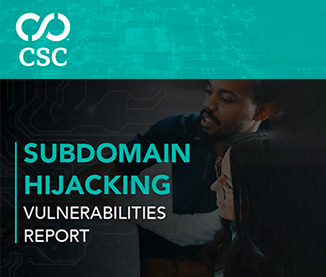

Brand Protection |
Sponsored by |

|



The year 2020 has created an increased impetus for change - especially as companies embrace digital transformation at an accelerated pace. Cybercriminals have also upped their game, switching their attention to hot targets such as healthcare and pharmaceutical brands.
A year after KPMG migrated all their webpages under home.kpmg, the Brand Registry Group interviewed them to talk about the impact. In the interview, KPMG shares how planning and communication are key in changing to a .BRAND domain name. Their experience ties in nicely to CSC’s three-phase .BRAND approach.
The attack surface of every Internet user gets wider every day, but it doesn't mean there's nothing that can be done about it. For one, analyzing possible attack vectors, such as suspicious or malicious domain names and IP addresses, can help with attack surface management.
Cybercrime is first and foremost financially motivated. Cybercriminals look for lucrative targets, including social media networks with hundreds of millions of monthly active users. We put this perspective to the test by analyzing the domain attack surface of three of today's largest social media platforms.
Just as no man is an island, no company can perform core functions without other organizations' help. This fact is highlighted in today's age of outsourcing, partnership, and third-party connections. Unfortunately, threat actors have also found a massive opportunity in these relationships.
Almost every transaction on the Internet is riddled with risks, and the use of online payment processing platforms is no exception. With more people opting to transact online and use digital wallets, threat actors have much to gain by targeting online payment processing platforms.
For those actively pursuing mergers and acquisitions, now is the time to do extensive due diligence to understand any implications around intellectual property (IP) and, more importantly, to understand what cybersecurity risks there may be.
Following a public announcement from the FBI and CISA warning the public to avoid spoofed election-related internet domains, CSC announced research findings that show the overwhelming majority of registered typo domains related to the election are vulnerable.
When brands think about registering a trademark, it's natural to consider the classes that match the direct nature of their products and services. A car manufacturer would register under vehicles; an apparel brand would register in clothing, footwear, and headwear – and perhaps jewelry if they offer accessories.
Most businesses rely on third-party entities to outsource certain functions, save on costs, and strengthen their cybersecurity capabilities. While working with external providers makes perfect business sense, it also poses cyber risks.